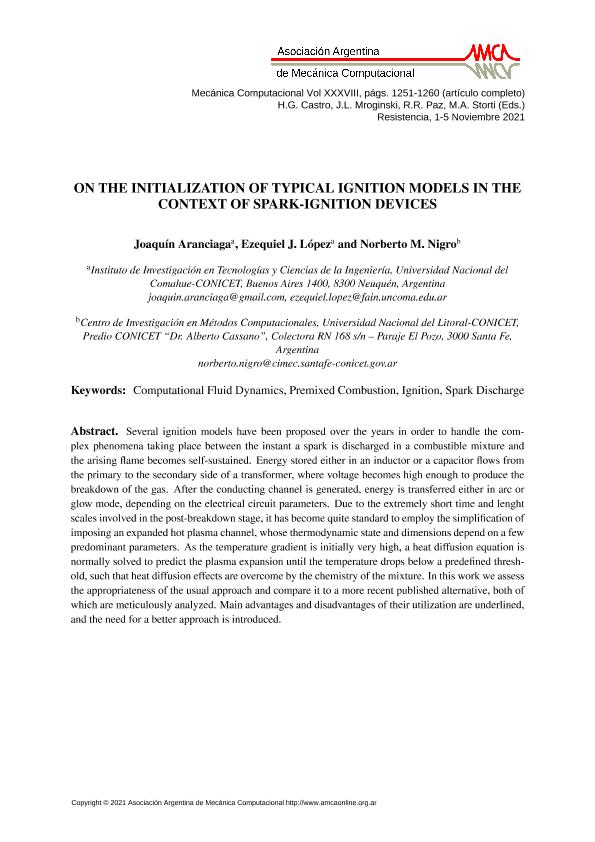Artículo
On the Initialization of Typical Ignition Models in the Context of Spark-Ignition Devices
Fecha de publicación:
11/2021
Editorial:
Asociación Argentina de Mecánica Computacional
Revista:
Mecánica Computacional
ISSN:
2591-3522
Idioma:
Inglés
Tipo de recurso:
Artículo publicado
Clasificación temática:
Resumen
Several ignition models have been proposed over the years in order to handle the complex phenomena taking place between the instant a spark is discharged in a combustible mixture and the arising flame becomes self-sustained. Energy stored either in an inductor or a capacitor flows from the primary to the secondary side of a transformer, where voltage becomes high enough to produce the breakdown of the gas. After the conducting channel is generated, energy is transferred either in arc or glow mode, depending on the electrical circuit parameters. Due to the extremely short time and lenght scales involved in the post-breakdown stage, it has become quite standard to employ the simplification of imposing an expanded hot plasma channel, whose thermodynamic state and dimensions depend on a few predominant parameters. As the temperature gradient is initially very high, a heat diffusion equation is normally solved to predict the plasma expansion until the temperature drops below a predefined threshold, such that heat diffusion effects are overcome by the chemistry of the mixture. In this work we assess the appropriateness of the usual approach and compare it to a more recent published alternative, both of which are meticulously analyzed. Main advantages and disadvantages of their utilization are underlined, and the need for a better approach is introduced.
Palabras clave:
COMPUTATIONAL FLUID DYNAMICS
,
PREMIXED COMBUSTION
,
IGNITION
,
SPARK DISCHARGE
Archivos asociados
Licencia
Identificadores
Colecciones
Articulos(CIMEC)
Articulos de CENTRO DE INVESTIGACION DE METODOS COMPUTACIONALES
Articulos de CENTRO DE INVESTIGACION DE METODOS COMPUTACIONALES
Articulos(IITCI)
Articulos de INSTITUTO DE INVESTIGACIONES EN TECNOLOGIAS Y CIENCIAS DE LA INGENIERIA
Articulos de INSTITUTO DE INVESTIGACIONES EN TECNOLOGIAS Y CIENCIAS DE LA INGENIERIA
Citación
Aranciaga, Joaquín; Lopez, Ezequiel Jose; Nigro, Norberto Marcelo; On the Initialization of Typical Ignition Models in the Context of Spark-Ignition Devices; Asociación Argentina de Mecánica Computacional; Mecánica Computacional; 11-2021; 1-10
Compartir




